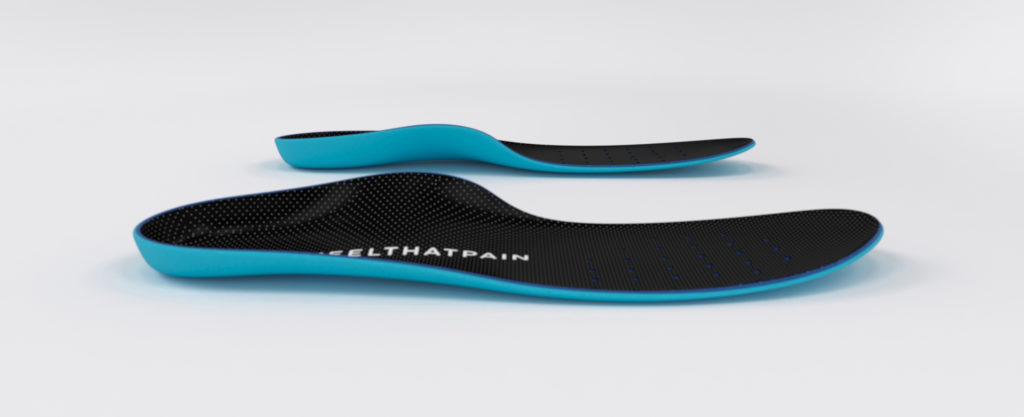 It’s no secret that orthotics are one of the best ways to safely and effectively treat heel pain and plantar fasciitis.
It’s no secret that orthotics are one of the best ways to safely and effectively treat heel pain and plantar fasciitis.
Special plantar fasciitis orthotics work by realigning, cushioning, and supporting a damaged plantar fascia, relieving pain and allowing inflamed and strained tissue to heal.
But can the benefits of orthotics extend to active individuals–like runners–who don’t have a compromised plantar fascia?
Orthotics are Not Just for Runners with Plantar Fasciitis!
The ideal running pattern can be elusive. Most of us underpronate or overpronate slightly, meaning that when our heels strike the ground, the foot either turns too much or not enough.

And even for runners who enjoy that perfect running pattern, the amount of force your feet absorb during this high-impact activity is pretty incredible. Saucony Shoes estimates that for someone who weighs 150 pounds, the foot experiences forces four to seven times that weight: the equivalent of up to 1,000 pounds.
Orthotics can be tremendously helpful to runners with or without plantar fasciitis, and with or without the perfect running pattern by helping the foot and lower body stay in alignment, helping the plantar fascia absorb impact, and cushioning the foot while running on hard surfaces.
High-End Running Shoes vs. Orthotics

While there’s no doubt that the shoes you wear are very important to the health of your feet, you don’t need to break the bank to get a good fit and proper support.
Many mid-range and budget running shoes offer excellent fit, comfort, heel and ankle support, and proper support–which can lead to the assumption that with ever-improving technology and quality in running shoes, orthotics don’t have much to add to the equation. However, most of the cushioning and support you’ll find in your running shoes is designed for proper fit and comfort–not arch support.
For this reason, specialized orthotic running shoes are a popular choice. But these orthotic shoes are often heavier than ideal for running, not to mention quite expensive, easily running into the hundreds.
What’s a runner to do? Orthotic inserts are a lightweight alternative that empowers almost any pair of running shoes with proper support, stability, and impact absorption.
Benefits of Running with Orthotics
The benefits to running with orthotic inserts–even if you’re not currently experiencing heel pain or foot pain–are substantial:
- Improve excessive pronation and gait abnormalities: If you pronate while you run, meaning your feet collapse inward, the consequences on your knees can be dire. Pronation also increases your chances of developing plantar fasciitis and stress fractures. Orthotics can correct this gait imbalance.
- Alignment: Orthotics have the ability to stabilize and improve alignment throughout the body, not just in your feet. When your feet are properly aligned as they strike the ground, it helps the rest of your lower body including legs, hips, and back, work in proper alignment.
- Posture: If you’re a runner, your gait and alignment don’t just have an impact while you run. Your posture–which can positively or negatively impact aches and strain to the rest of your body–is directly tied to a healthy gait and alignment.
- Preventative care: Orthotics help stave off a whole host of problems by supporting your plantar fascia and other muscles and ligaments in the feet. These conditions include plantar fasciitis, shin splints, blisters, hammer toe, and tendonitis.
What Kind of Orthotic Inserts Are Best for Runners?

Orthotic inserts come in a wide variety. It can be challenging to determine which one is going to give you the best support, cushioning, and bang for your buck. Here’s a few pointers to keep in mind:
Test collapsibility: You should be able to put pressure on the insert’s arch without collapsing it. If the insert collapses with pressure from your fingers, it’s not supportive enough to withstand the impact from running.
Choose an insert with Fascia Bar technology: Fascia Bar support is a must-have in an orthotic insert for runners. This patented technology lifts the arch to the optimal level with the highest caliber support.
Many runners have the best results from full length inserts: Some runners find that half-length inserts slip and slide inside of their shoes. If this is the case, a full length insert is the best bet for functionality and comfort.
Try over-the-counter orthotics before prescription orthotics: Custom orthotics are both extremely expensive (up to $450), take time to create (usually about a month) and not necessarily more effective than quality over-the-counter options. Over-the-counter orthotics with Fascia Bar technology are both inexpensive (the cost of a few cups of coffee) and have a 90% satisfaction rate.
Whether your goal is to head off plantar fasciitis and other heel and foot problems, improve your gait or posture, or help your body stay in proper alignment with each mile, orthotics are a terrific way to reduce the amount of impact and strain your body undergoes during a run or jog.
Runners of all speeds, abilities, and ages choose to wear orthotics each time they pound the pavement to protect some of their most important assets: their feet and heels.




Hello, how do I choose? I’m in so much pain with tendinitis and PLANTAR fasciitis and stress fractures for 4 months…my physical therapist says I’m a over supinator
Hey Betty! Why don’t you give us a call at 877-215-3200 or email at [email protected] and one of our specialists will help you select the best inserts for your unique situation!
Thanks for explaining how orthotics can help runners prevent getting blisters on their feet. Now that my wife is planning on losing weight before her sister’s wedding, she has been running to work but has sensitive feet. Maybe it would be best for her to use some orthotics for when she exercises.